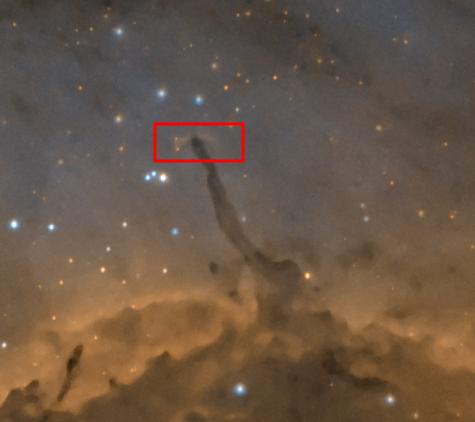This is my very first narrow-band photo using the hubble palette!
The hubble palette assigns the different narrow-band channels (H-alpha (hydrogen), O-III (oxygen) and S-II (sulfur)) to the RGB-color channels a bit differently . In this photo, red is S-II, green is (0.2 * OIII) + (0.6 * Ha) + (0.2 * SII) and blue is (0.8 * OIII) + (0.2 * Ha).
This gives the nebula a pleasing blueish and red / orange look.
IC5070 is located roughly 1800 light years from earth, close to the bright star Deneb in the constellation cygnus, the Swan. The nebula spans roughly 10 light years in diameter. In the center of the Pelican Nebula lay young stars, freshly born and heating up the cold gas around them. This results in a slowly outwards moving front of ionized gas.
The nebula’s appearance is defined by dark dust clouds, which outline the pelican’s long bill and eye, and bright clouds of ionized gas, which form the curved shape of the pelican’s head and neck.
A number of unusually dense filaments of cold gas are still visible, among them two jets emanating from the Hervig-Haro object 555 (HH 555):

Herbig-Haro objects are jets of matter and partially ionized gas ejected by newborn stars, which appear as patches of nebulosity in star-forming regions. These jets are ejected at speeds of several hundred kilometers per second and collide with nearby dust and gas, producing dramatic shock fronts that glow as a result of the gas being heated as it collides with the interstellar medium.
The jets evolve and are eventually blown away by the wind produced by the young star. They disperse after a few hundreds of thousands of years at most. HH 555 is the most prominent example of this kind of object found in the Pelican Nebula.
The same photo using a different color palette, where red is Hydrogen, green is Sulfur and blue is Oxygen:
